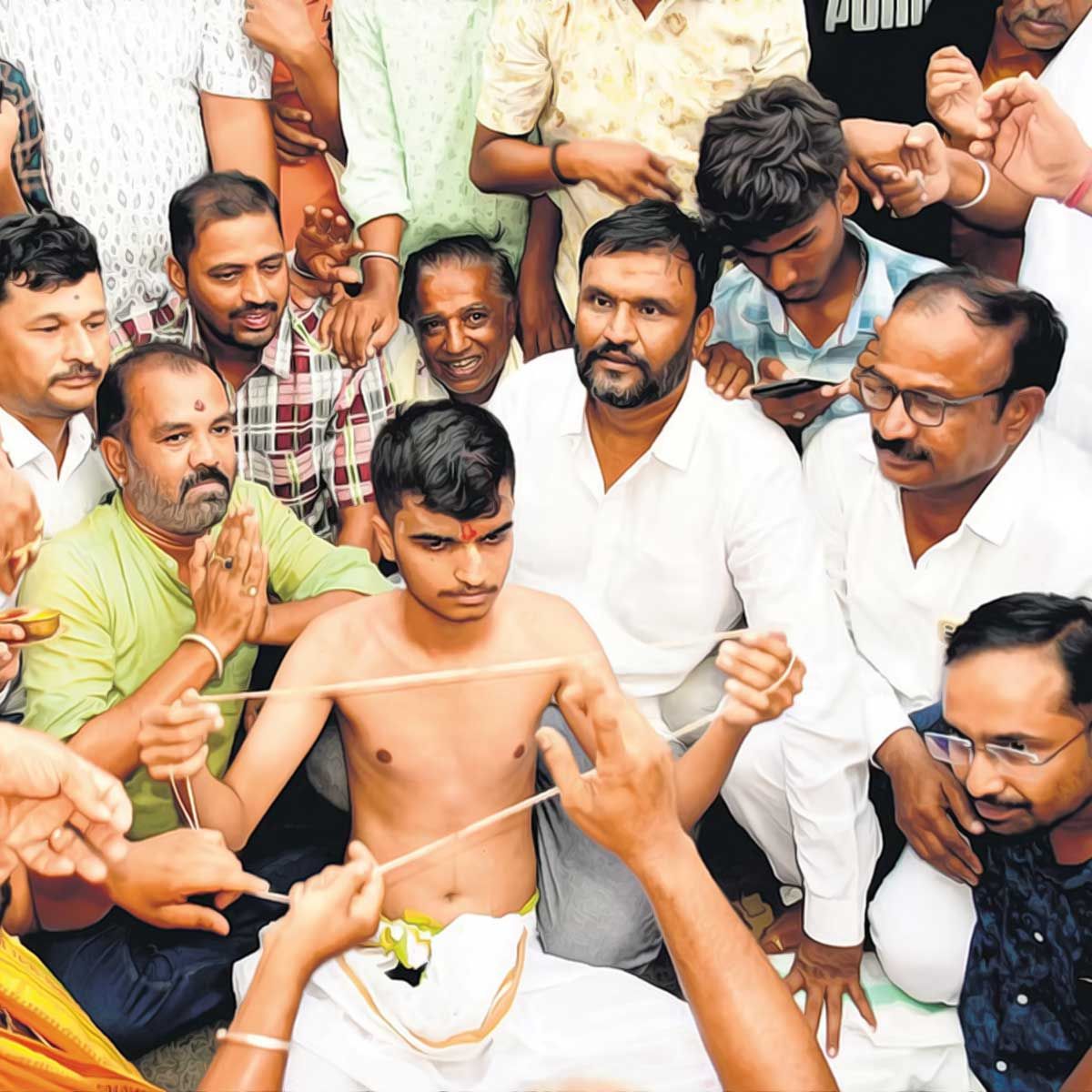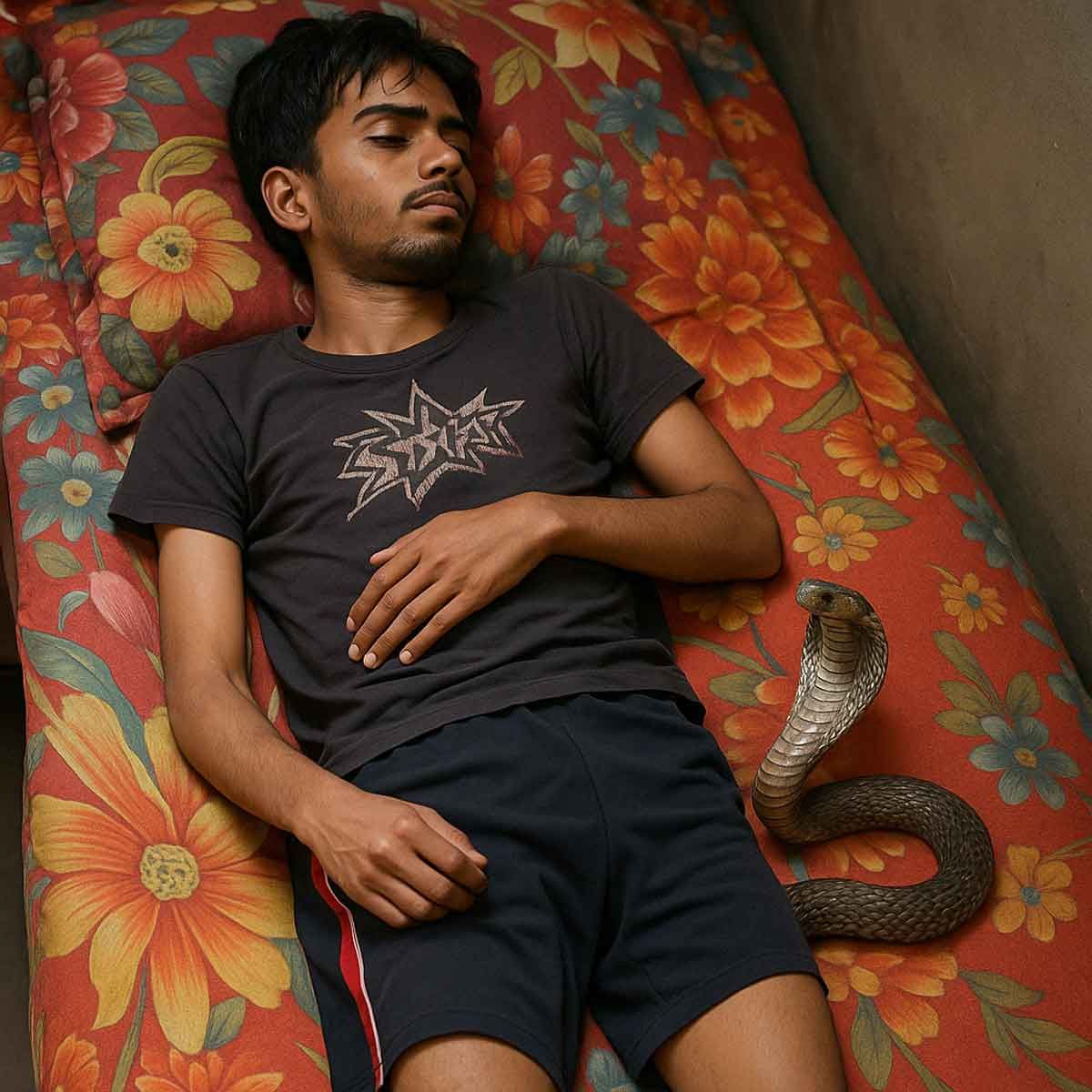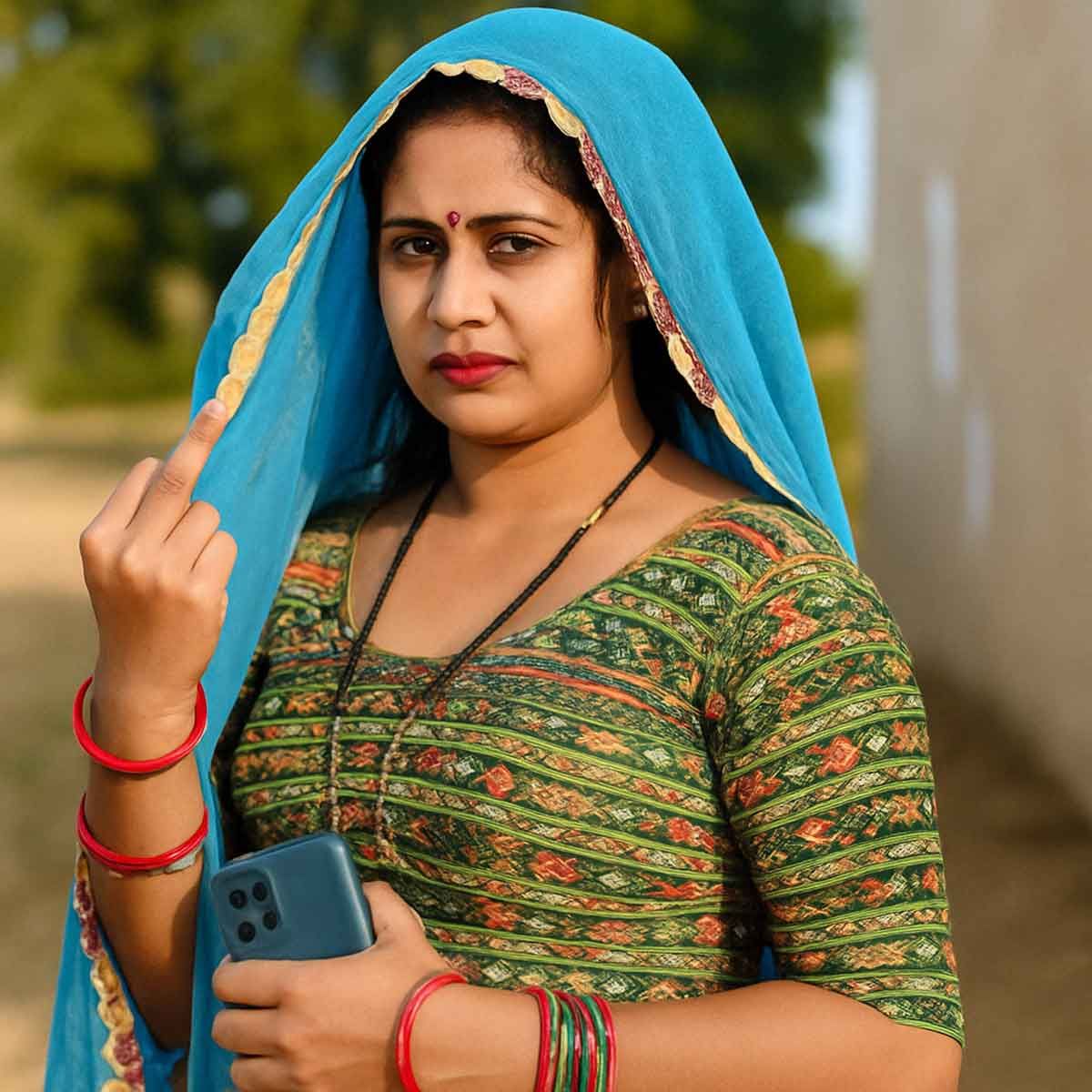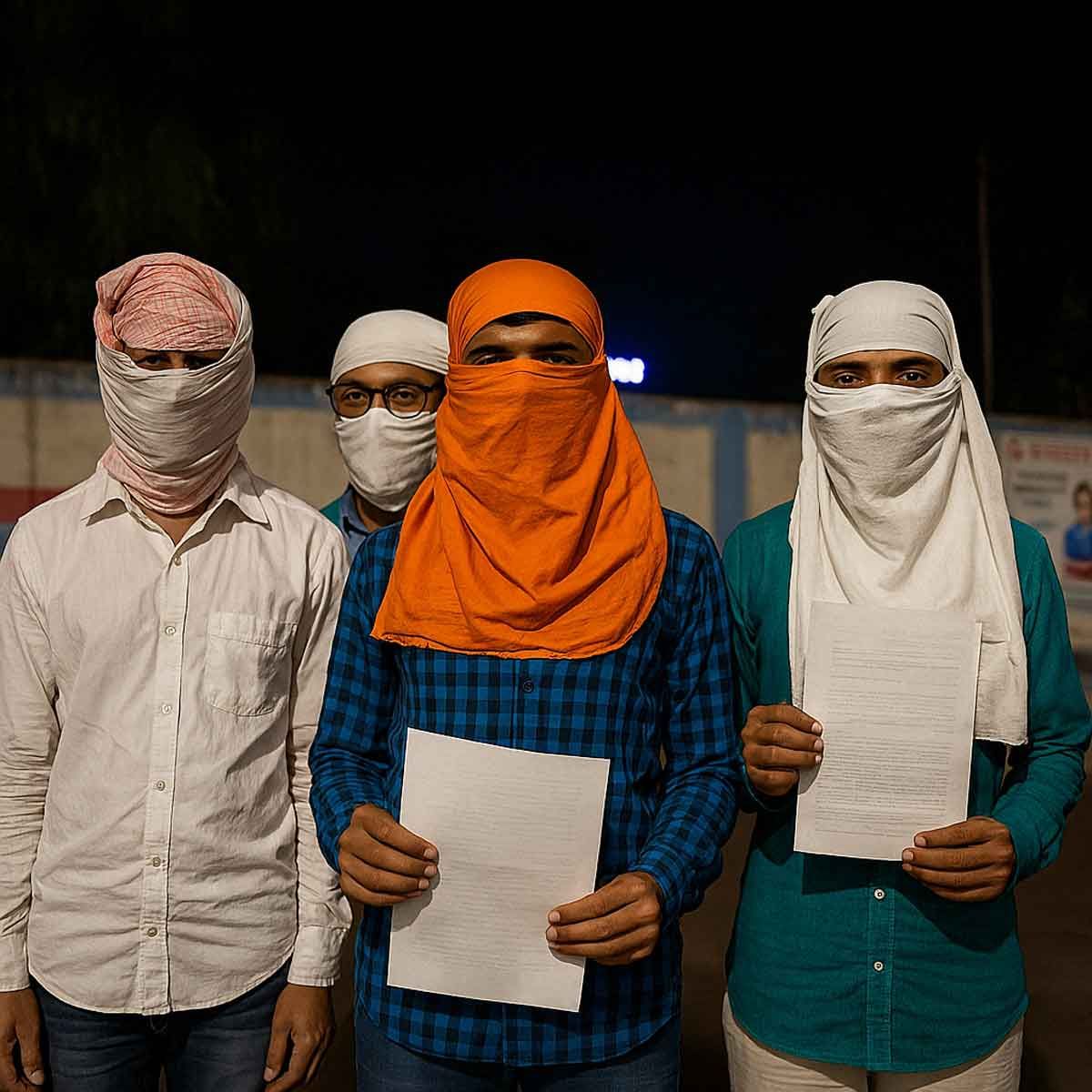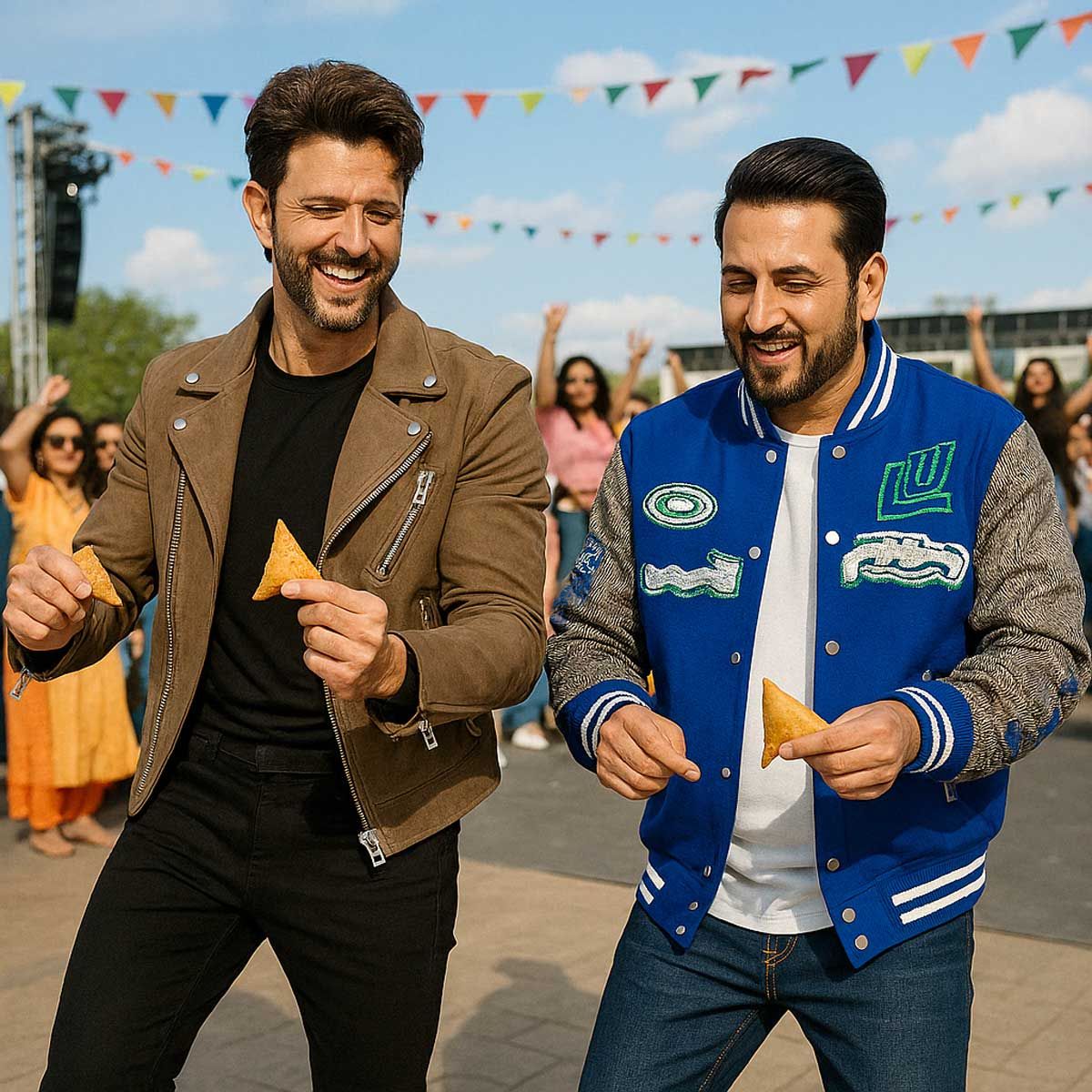More Coverage
Twitter Coverage
Satyaagrah
Written on
Satyaagrah
Written on
Satyaagrah
Written on
Satyaagrah
Written on
Satyaagrah
Written on
JOIN SATYAAGRAH SOCIAL MEDIA
"Where is all the knowledge we lost with information": Father of Surgery - World`s First Surgeon was Maharishi Sushruta who performed surgeries on nose, ears, bladder, cataracts, fistula, joints, and hemorrhage more than 2600 ago with surgical instruments

Susrutha performed surgeries on the nose, ears, bladder, cataracts, fistula, joints, and hemorrhage more than 2600 ago with surgical instruments, but the first known surgery performed on the human body was mentioned in Rig-Veda (composed around 23720 BC), where a Prosthetic leg was attached to a queen’s leg so that she could walk normally and even participate in war.
Later, plastic surgery was performed in India around the 6th century BCE by Susrutha and then popularized in the Arab world and actually launched to Europe.
Susrutha performed first rhinoplasty (nose job) with a unique understanding of the circulation system
|
Cataract surgery is done in the 6th century BCE
Cataract surgery was also known to the Susruta) in the 6th century BCE. He did it with a special tool called the Jabamukhi Salaka, a curved needle used to loosen the lens and push the cataract out of the field of vision. The eye would later be soaked with warm butter and then bandaged. Though this method was successful, Susruta cautioned that cataract surgery should only be performed when absolutely necessary.
Greek philosophers and scientists traveled to India where these surgeries were performed by physicians.
Removal of cataracts by surgery process was also introduced into China from India in later years.
|
Removal of stones in Kidneys and Gall Bladder
The earliest operation for the removal of a stone is also mentioned in the Sushruta Samhita.
This operation involved exposure and going up through the floor of the bladder.
Sushruta Samhita'(Sushruta’s compendium), which describes the ancient tradition of surgery in Indian medicine is considered one of the most brilliant gems in Indian medical literature. This treatise contains detailed descriptions of the teachings and practice of the great ancient surgeon ‘Sushruta‘who has considerable surgical knowledge of relevance even today.
Because of his seminal and numerous contributions to the science and art of surgery he is also known by the title “Father of Surgery.”
Much of what is known about this inventive surgeon is contained in a series of volumes he authored, which are collectively known as the Sushruta Samhita in which he describes over 300 surgical procedures and 120 surgical instruments and classifies human surgery into 8 categories. He lived, taught, and practiced his art on the banks of the Ganges in the area that corresponds to the present-day city of Varanasi in North India.
|
Medicine & Surgeries in Ancient India
In spite of the absence of anesthesia, complex operations were performed. The practice of surgery has been recorded in India around 800 B.C. This need not come as a surprise because surgery (Shastrakarma) is one of the eight branches of Ayurveda the ancient Indian system of medicine. The oldest treatise dealing with surgery is the Shushruta Samahita (Shushruta’s compendium). Shusruta who lived in Kasi (Varanasi) was one of many Indian medical practitioners including Atraya and Charaka. He was one of the first to study human anatomy. In the Shusruta, Samahita he has described in detail the study of anatomy with the aid of a dead body. Shusruta’s forte was rhinoplasty (Plastic surgery)and ophthalmology (ejection of cataracts). Shushruta has described surgery under eight heads Chedya (excision), Lekhya (scarification), Vedhya (puncturing), Esya (exploration), Ahrya (extraction), Vsraya (evacuation), and Sivya (Suturing).
Yoga is a system of exercise for physical and mental nourishment. The origins of yoga are shrouded in antiquity and mystery. Since Vedic times, thousand of years before, the principles and practice of yoga have crystallized. But, it was only around 200 BC that all the fundamentals of yoga were collected by Patanjali in his treatise, named Yogasutra, that is, Yoga-Aphorisms.
In short, Patanjali surmised that through the practice of yoga, the energy latent within the human body may be made live and released, which has a salubrious effect on the body and the mind. Now, in modern times, clinical practices have established that several ailments, including hypertension, clinical depression, amnesia, and acidity, can be controlled and managed by yogic practices. The application of yoga in physiotherapy is also gaining recognition.
|
Sushruta has pointed out that hemorrhage can be arrested by apposition of the cut edges with stitches, application of styptic decoctions, by cauterization with chemicals or heat. That the progress of surgery and its development is closely associated with the great wars of the past is well known. The vrana or injury, says Sushruta, involves the breakdown of body components and may have one or more of the following seats for occurrence, viz., skin, flesh, blood vessels, sinews, bones, joints, internal organs of chest and abdomen, and vital structures. Classically vrana, the wound, is the ultimate explosion of the underlying pathological structure. It is, in Sushruta’s words, the sixth stage of a continuous process, which starts with sotha (inflammation). Sushruta says that in the first stage, the ulcer is unclean and hence called a dusta-vrana. By proper management, it becomes a clean wound, a suddha-vrana. Then there is an attempt at healing which is called ruhyamana-vrana and when the ulcer is completely healed, it is a rudha-vrana. Sushruta has advocated the use of wine with the incense of cannabis for anesthesia. Although the use of henbane and of Sammohini and Sanjivani are reported at a later period, Sushruta was the pioneer of anesthesia.
Sushruta describes eight types of surgical procedures: Excision (chedana) is a procedure whereby a part or whole of the limb is cut off from the parent. Incision (bhedana) is made to achieve effective drainage or exposure of underlying structures to let the content out. Scraping (lekhana) or scooping is carried out to remove a growth or flesh of an ulcer, tartar of teeth, etc. the veins, hydrocele, and ascitic fluid in the abdomen are drained by puncturing with a special instrument (vyadhana). The sinuses and cavities with foreign bodies are probed (esana) for establishing their size, site, number, shape, position, situation, etc. Sravana (blood-letting) is to be carried out in skin diseases, vidradhis, localized swelling, etc. in case of accidental injuries, and in intentional incisions, the lips of the wound are apposed and united by stitching (svana.)
To obtain proficiency and acquire skill and speed in these different types of surgical manipulations, Sushruta devised various experimental modules for trying each procedure. For example, incision and excision are to be practiced on vegetables and leather bags filled with mud of different densities; scraping on the hairy skin of animals; puncturing on the vein of dead animals and lotus stalks; probing on moth-eaten wood or bamboo; scarification on wooden planks smeared with beeswax, etc. On the subject of trauma, Sushruta speaks of six varieties of accidental injuries encompassing almost all parts of the body.
|
Sushruta also gives the classification of the bones and their reaction to injuries. varieties of dislocation of joints (sandhimukta) and fractures of the shaft (kanda-bhagna) are given systematically. He classifies and gives the details of the six types of dislocations and twelve varieties of fractures. He gives the principles of fracture treatment, viz., traction, manipulation, appositions, and stabilization. Sushruta has described the entire orthopedic surgery, including some measures of rehabilitation, in his work.
As the war was a major cause of injury, the name Salya-tantra for this branch of medical learning is derived from Salya, the arrow of the enemy, which in fights used to be lodged in the body of the soldiers. He emphasizes that the removal of foreign bodies is fraught with certain complications if the seat of the Salya is a marma.
Sushruta also discusses certain surgical conditions of the anorectal region, he has given all the methods of management of both hemorrhoids and fistulae. Different types of incisions to remove the fistulous tract as langalaka, ardhalangalaka, sarvabhadra, candraadha (curved), and kharjurapatraka (serrated) are described for adoption according to the type of fistula.
Sushruta was well aware of the urinary stones, and their varieties; the anatomy of the urinary bladder along with its relations is well recorded in the chapter on urinary stones. Varieties of stones, their signs and symptoms, the method of extraction, and operative complication are given in detail. Apart from the above, surgery for intestinal obstruction (baddha-gudodara), perforated intestines (chidrodara), and accidental injuries to the abdomen (assaya-bhinna) in which protrusion of omentum occurs are also described along with their management.
References:
 Support Us
Support Us
Satyagraha was born from the heart of our land, with an undying aim to unveil the true essence of Bharat. It seeks to illuminate the hidden tales of our valiant freedom fighters and the rich chronicles that haven't yet sung their complete melody in the mainstream.
While platforms like NDTV and 'The Wire' effortlessly garner funds under the banner of safeguarding democracy, we at Satyagraha walk a different path. Our strength and resonance come from you. In this journey to weave a stronger Bharat, every little contribution amplifies our voice. Let's come together, contribute as you can, and champion the true spirit of our nation.
 |  |  |
| ICICI Bank of Satyaagrah | Razorpay Bank of Satyaagrah | PayPal Bank of Satyaagrah - For International Payments |
If all above doesn't work, then try the LINK below:
Please share the article on other platforms
DISCLAIMER: The author is solely responsible for the views expressed in this article. The author carries the responsibility for citing and/or licensing of images utilized within the text. The website also frequently uses non-commercial images for representational purposes only in line with the article. We are not responsible for the authenticity of such images. If some images have a copyright issue, we request the person/entity to contact us at satyaagrahindia@gmail.com and we will take the necessary actions to resolve the issue.
Related Articles
- "Sanskrit is the language of philosophy, science, and religion": A Neuroscientist, James Hartzell explored the "Sanskrit Effect" and MRI scans proved that memorizing ancient mantras increases the size of brain regions associated with cognitive function
- “Genius is never understood in its own time”: Do you know when you put your debit card in ATM and ask for money, machine arranges the money before giving it to you using Srinivasa Ramanujan’s partition theory, celebrated as National Mathematics Day
- Legend of Maharishi Charaka also known as The father of Ayurveda: Earliest school of medicine known to mankind is Ayurveda
- "Its a desirable thing to be well-descended, but the glory belongs to our ancestors": An artist from Pakistan went viral for using artificial intelligence to reimagine life in Mohenjo Daro, one of the most striking monuments from the dawn of civilization
- "Three things cannot long be hidden: the sun, the moon, and the truth": It was not Isaac Newton but Rishi Kanad who first discovered "Laws of Motion" at least 2000 years before Newton in his Vaishesika Sutras, was also known as "Father of Atomic Theory"
- "Symbols are powerful because they are the visible signs of invisible realities": Real Sindoor comes from a tree, a low-height tree that finds mention in our scriptures. Seeds from the tree are crushed to make fine powder and were used by Sita and Hanuman
- Ekapada, unveiling the mystery of water - A journey into its quantum vibrations, the subtle energies it carries, and its symbolic representation in ancient temples discovering intersection of science, spirituality and timeless wisdom encoded in the atom
- "You are what you believe in. You become that which you believe you can become": Google Software Engr. launches GitaGPT that deploys AI to answer your questions about life problems, “What if you could talk to Bhagavad Gita? To Lord Krishna himself?”
- "Neglect will drive a noble mind to depart for another land": Brilliant mind - Dr Subhash Mukhopadhyay who created India's first and world's second test tube baby 'Durga' in 1978 with the help of some general equipment and refrigerator was punished for it
- "Truth will ultimately prevail where there is pains taken to bring it to light": We studied that speed of light was discovered by Ole Roemer (1676), well in reality Rig Veda contains the accurate speed of light in one of its shlokas thousands of years ago
- "Varahamihira - ancient Astrologer, Astronomer and Mathematician": His encyclopaedic knowledge and lively presentation of subjects, as dry as astronomy, made him a celebrated figure, discovered trigonometric formulas and Pascal’s triangle
- "Culture is the widening of the mind and of the spirit": Origin of the timepiece AM and PM - Arohanam Martandasaya means the ascension (rise) of the sun, Patanam Martandasaya means the inclination of the sun
- "It is through an unbroken chain of witnesses that we come to see the face of reality": The first ever recorded nose surgery was done by Sushruta who is also regarded as the father of surgery, wrote one of the world's earliest works on medicine & surgery
- "When we bring what is within out into the world, miracles happen": Built by the Rajput king Sawai Jai Singh II in 1734, UNESCO World Heritage site Jantar Mantar, Jaipur is an astronomical observatory, which features the world’s largest stone sundial
- "You are what you believe in. You become that which you believe you can become": J Robert Oppenheimer, a theoretical Physicist recited a quote from Bhagavad Gita after witnessing first Nuclear explosion - "Now I am become Death, the destroyer of worlds"















